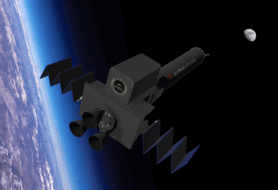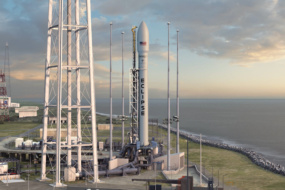Few companies have shaken up an industry as profoundly as SpaceX has transformed the launch market.
It has been nearly nine years since SpaceX landed its first Falcon booster on a drone ship. Since then, no other rocket has attempted the feat. SpaceX, however, continues to rack up an impressive stat sheet—landing 300+ boosters, launching 10 Falcon Heavy flights, ferrying 50+ people to orbit aboard Crew Dragon, and testing its largest rocket, Starship, with the stated goal of someday bringing people to Mars.
So how did the underdog startup reenergize a notoriously slow-moving industry and help propel the US into the next era of space exploration?
Enter Reentry: Eric Berger’s new book Reentry takes readers behind the scenes, offering unprecedented access to company leaders who appear eager to (finally) tell the inside story of SpaceX’s rise.
Reentry picks up where Liftoff—Berger’s 2021 book on Falcon 1—left us. The second chapter of SpaceX’s story begins with the debut of Falcon 9 and then extends into the origin stories of Cargo Dragon, Crew Dragon, reusable boosters, Falcon Heavy, and Starship.
The book offers never-before-heard stories about radically upending industry conventions, white-knuckle problem-solving, explosive failures, jubilant wins, and late nights working (and partying, of course). Berger’s writing turns a story about industrial manufacturing into a fast-paced and colorful narrative for any reader to enjoy.
Work becomes life: For the engineers working at SpaceX during these up-and-coming years, the company was much more than just a job. They lived and breathed work, often spending weeks and months away from friends and family toiling away on the factory floor—driven by an obsession with furthering humanity’s place amongst the stars and a boss who demanded their very best.
Elon Musk insisted that the team question everything, economize resources, work on impossible timelines, fail fast, and foster a culture of high risk tolerance.
Pads historically cost $2B to build? Do it for $20M. Found a crack in a Merlin engine nozzle set to power a Dragon demo launch? Just get your best engineer to cut the nozzle three inches shorter and let ‘er rip.
TL;DR: SpaceX’s rapid iteration meant everything that could go wrong, often did go wrong. In rocket engineering, that makes for fiery explosions. In literature, that makes for a very entertaining read.
Reentry is a rare glimpse into the inner workings of SpaceX and the dozens of stories that made it all happen.




